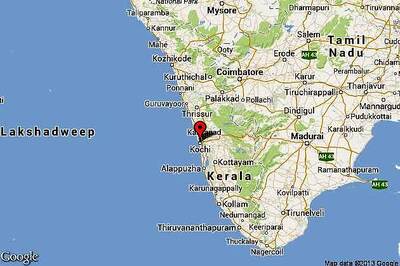
views
Parents have yet another reason to be worried about the growing impact of social media on the lives of their young ones. Simply put, driving someone to suicide in the name of a social media challenge, has now manifested itself in the name of the Momo challenge. It has been popping up globally over the past few weeks, mostly spread on instant messaging app WhatsApp, and has already claimed its first victim. A 12-year old girl from Argentina fell in the trap, which culminated with her being challenged to commit suicide. The anonymous senders won, the girl lost. And her family lost too, in the process. But this could just be the start of a terrifying repeat.
As we speak, the source of origin for the Momo challenge are unknown, and so are the motives. Except one—drive children to their deaths. It is at present very popular in South American countries but has gained enough attention in other countries as well for parents and law enforcement to be worried. “It all started in a Facebook group where participants were challenged to start communicating with an unknown number," the Computer Crime Investigation Unit of the State of Tabasco, Mexico, has posted on Twitter.
Incidentally, the avatar being used to depict the Momo challenge is actually the creation of a Japanese artist, Midori Hayashi, who is in no way attached with this game. This sculpture, of a "Mother Bird", is on display at the Tokyo Vanilla Gallery.
Immediately, parallels are being drawn with the Blue Whale challenge, which in the not-too-distant past, had strangers drawing vulnerable children into a challenge, which ultimately led to their deaths. It is believed that Blue Whale started out on a Russian social network, and then spread to other platforms. Last November, an alleged ringleader of the game, a 21-year-old Russian Filipp Budeikin, was detained and charged with organising groups that promoted suicide. He is believed to have told the police later during interrogation, that he thought of his victims as “biological waste, that they were 'happy to die and he was cleansing society." Among one of the challenges put forward by Blue Whale was that the ‘participants’ had to make a shape of a whale on their wrist, using a knife or a razor. One doesn’t need to be a rocket scientist to know what the outcome of that would be. A hospital is never near enough in such cases, let is just say. The final challenge in the game was to jump off a high rise building.
The calling card to entice vulnerable children is the sense of a challenge. It is, in many ways, tapping the same enthusiasm that sees us play video games for hours on end, in the motivation to cross one level after another. The challenge here is also ‘levels’. Though since this is the real world, some of these levels result in considerable physical harm and in some cases, even death.
This is a rather worrying trend too, even more so because it is already very popular.
Social media platforms in general, and not just anonymous challenges being thrown around by unknown people, are becoming increasingly linked with a number of suicides. One such example of a user of the online discussion site 4chan.org, who posted a message saying he would live stream his suicide—as it turned out, more than 200 people logged into the stream, though he is lucky to have survived. A 12-year old in Georgia wasn’t so lucky. She streamed her suicide on Facebook Live, and had more than 40,000 people watching her move on to what is hopefully a better place.
A research by United States Centres for Disease Control, in December 2016, suggests that children in the age group of 15 to 19 are up to four times more likely to be vulnerable. Among the many reasons, the use of social media such as Instagram and Snapchat, the pressure to be ‘perfect’, the pressure of grades and other accomplishments as well as the general anxiety are just some of the reasons. According to the British Psychological Society, approximately 90 percent of teenagers are on social media. Constantly seeing what their peers are doing on a day-to-day basis, which is damaging to their mental health.
In a 2016 study, scientists from the Stanford University logged the brain activity of teenagers viewing an Instagram feed, and the brain activity was boosted when viewing posts that signified success, rewards, social recognition and attention.
The way things are, the Momo challenge and the Blue Whale challenge before this aren’t the first evils of their kind.
Back in 2014, a game called Aerosol Challenge saw teenagers spraying themselves with deodorant at a distance of just a few inches from their skin, the idea being to see who could endure the pain the longest, and thus be voted as the strongest. The result is a lot of children were left with painful skin burns. Then came the Pass-out Challenge, which got the youngsters to try and choke themselves. The idea was to get to the point where one would pass out, and whoever took the longest was somehow better than others—and this was all recorded and streamed on social media, to boot. There was also a fad called Neknominate, which motivated children enough to drink very potent and sometimes unknown combinations of alcohol. In many ways, so is jumping out of the driving seat of a moving car and running beside it while singing, dancing and showing your bravado in general.
Read more: France Bans Children From Using Smartphones And Tablets During School Hours




















Comments
0 comment